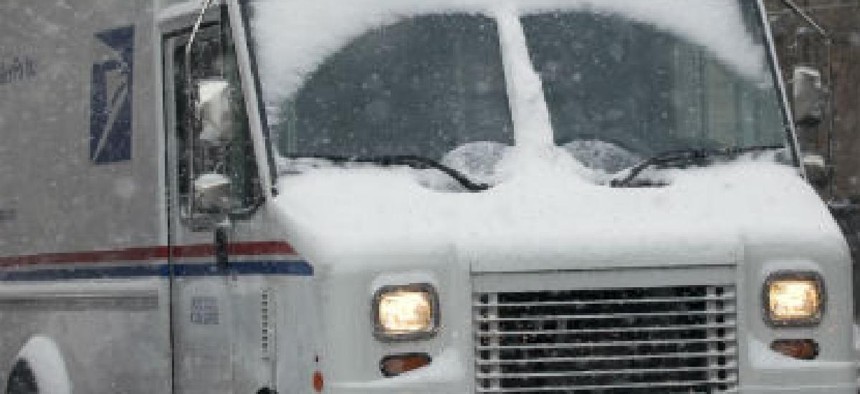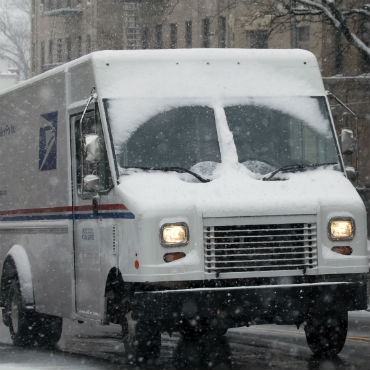Is USPS prepping for driverless mail trucks?

A report by the USPS Office of the Inspector General examines how autonomous vehicle technology could change the way the Postal Service transports and delivers the mail.

A USPS truck drives through a snowfall in the Bronx. (Photo credit: Shutterstock.com)
What: "Autonomous Vehicles for the Postal Service," a report by the Office of the Inspector General for the United States Postal Service
Why: As proposals and legislation around autonomous vehicles wend through Congress, the USPS IG is examining how the emerging technology could change the way the agency transports and delivers the nation’s mail.
While mainstream dialogue around autonomous vehicles "focuses on how personal mobility will change, logistics could be profoundly affected as well." For instance, the authors cited research by financial services firm Morgan Stanley that estimated the U.S. trucking industry alone could see as much as $168 billion in savings from reduced costs associated with labor, fuel and accidents.
The USPS, which employs hundreds of thousands of drivers, suffered 30,000 road accidents in 2016 and loses an average of 12 drivers per year to traffic fatalities. The service "stands to benefit greatly from a drop in the accident rate," according to the survey.
How will USPS delivery workers integrate driverless vehicles into their workflow? Some future visions include human beings to physically deliver the mail to individual homes and businesses, with the advanced vehicles serving as an automated taxi or a courier to pick up more mail from the post office as postal workers make their rounds.
Another option removes people from the equation altogether by using the vehicles as a mobile package and parcel lockers that "would come to the customer when convenient, allowing 24/7, on-demand delivery." Fully autonomous trucks to transport mail across the country were also considered.
While such changes may lead to increased productivity, they will likely also upend the trucking industry that USPS relies on and fundamentally alter the postal worker's job towards a more administrative and customer service role.
Though the technology is still five to 10 years away, once "driverless vehicles emerge, at maturity they could replace letter carriers on a large scale" the report suggested.
Ultimately, the authors recommended a deliberate transition, advising USPS to "gradually automate its vehicles where it makes strategic sense, and refine its [automated vehicle] strategy as the technology, market, regulation, and public perception evolve."
Verbatim: "Despite the factors still hindering AV availability, it seems clear that this is where the future of transportation is headed. The pace of innovation suggests that we can expect highly-autonomous vehicles to be available within 10 years. "





